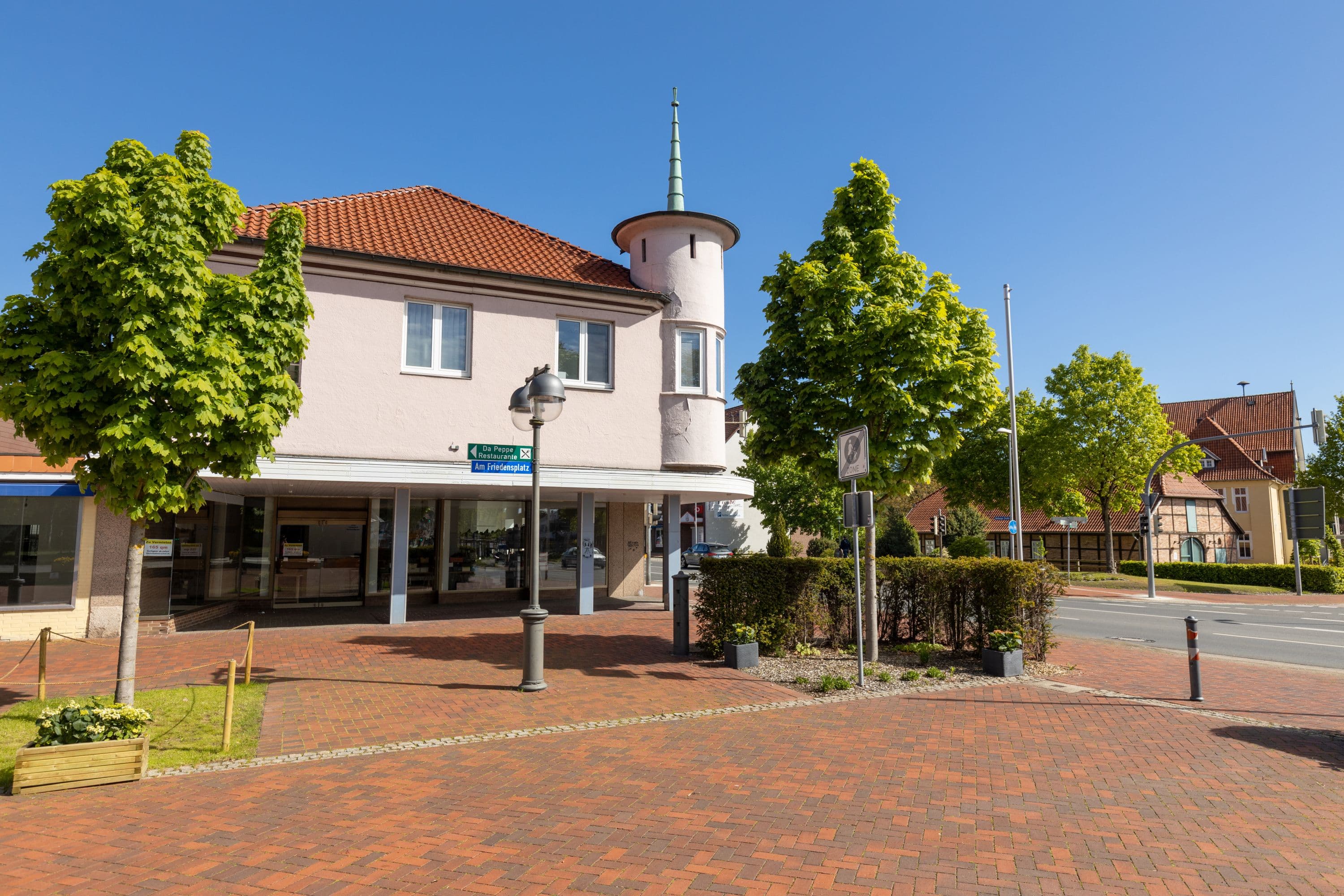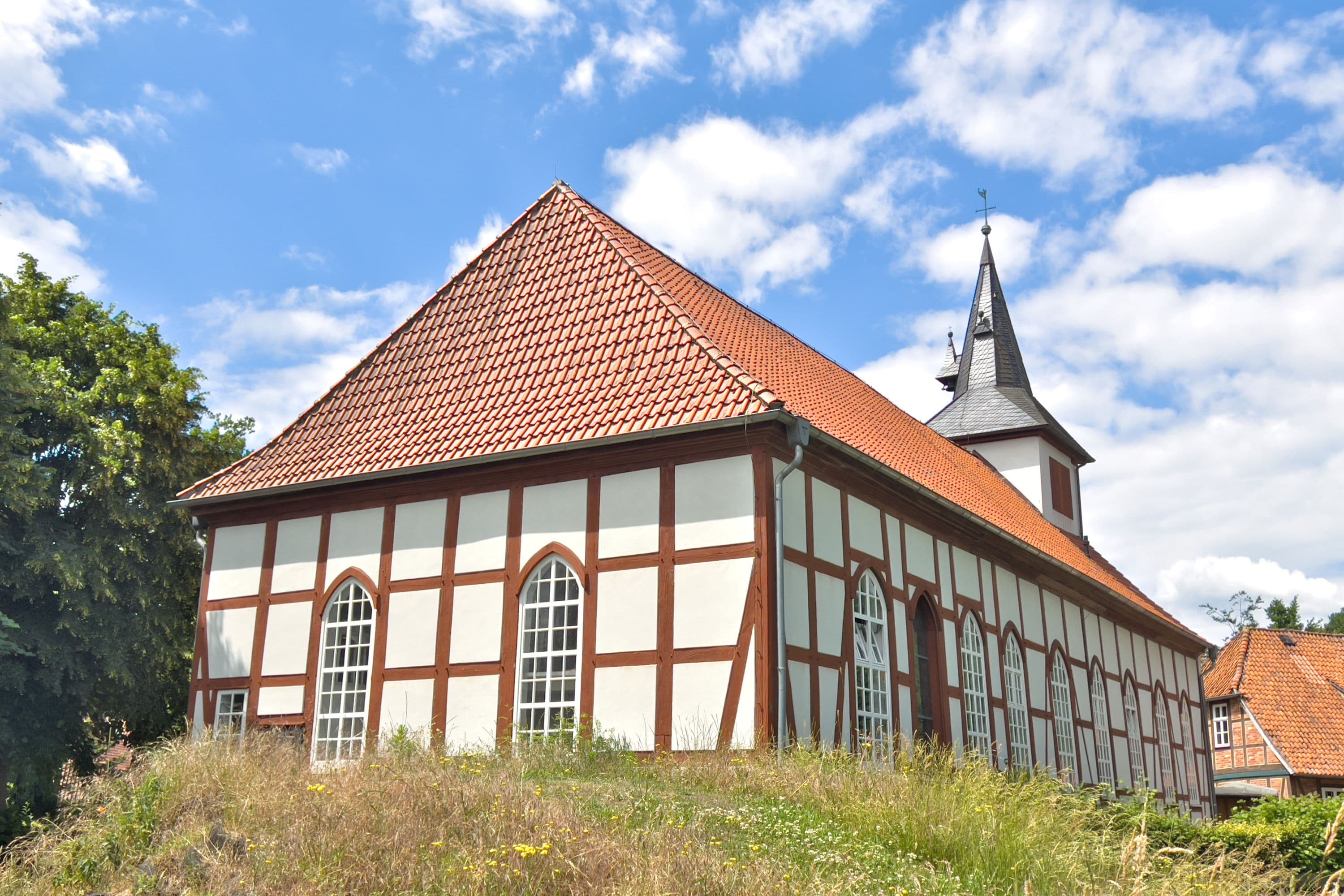

















Radrundtour um Bergen - zwischen Moor und Saline
Die Tour führt durch malerische Heidedörfer, Wälder und Moorlandschaften. Unterwegs entdecken Sie Jahrtausende alte Grabhügelfelder, Bauerngehöfte und Gutshäuser sowie kleine, ganz besondere Museen. Die Gedenkstätte Bergen-Belsen steht als Mahnmal und Zeuge der jüngsten Geschichte, sie erinnert an die Verbrechen des Nationalsozialismus.Besonderheiten der Tour
Bergen - lebendige Kleinstadt in der Südheide
Auf halbem Weg zwischen Soltau und Celle heißt Bergen Sie am Rande des Naturparks Südheide willkommen. Die lebendige Kleinstadt bietet Ihnen einen zentralen Einstiegspunkt in die umliegende Landschaft mit ihren malerischen Heidedörfern und einem sehr gut ausgebauten Netz von Rad- und Wirtschaftswegen.
Bemerkenswerte Funde aus bronzezeitlichen Hügelgräbern in und um Bergen zeugen davon, dass der Ort schon vor mehr als 3.000 Jahren eine besondere Bedeutung hatte.
Becklinger Moor - Weitblick mit Artenvielfalt
Die Entstehung des Becklinger Moores begann vor 125.000 Jahren in der Abflussrinne eines schmelzenden Gletschers. Bis Ende des 18. Jahrhunderts blieb das damals 3 Kilometer breite und 7,5 Kilometer lange Moor vom Menschen weitgehend unberührt. Karten von 1770 zeigen erste Wege und deuten auf die beginnende Moornutzung hin. Noch bis in die 1950er Jahre wurde Torf als Brennstoff gestochen. Aber erst die großflächige Trockenlegung von 1964 ließ gewaltige Teile des Moors verschwinden. Es entstanden Felder, Wiesen und Wälder, bis 1985 der Südteil des Moores zum Naturschutzgebiet erklärt wurde.
Seit 2006 wird dem Moor in diesem Bereich sein Wasser zurückgegeben. Viele seltene Pflanzen und Tiere – wie Wollgras oder Seeadler – fühlen sich hier wohl. Der Aussichtsturm gewährt einen faszinierenden Weitblick.
Gedenkstätte Bergen-Belsen - Erinnerung an KZ-Opfer
Die internationale Gedenkstätte Bergen-Belsen erinnert an die mehr als 70.000 Menschen, die hier zwischen 1941 und 1945 umkamen. In der täglich geöffneten Dauerausstellung werden Originalobjekte, Fotos und zahlreiche Videointerviews von Überlebenden gezeigt. Außerdem können Sonderausstellungen, eine Bibliothek und bauliche Reste des Lagers besichtigt werden. Das breit gefächerte Bildungsangebot beinhaltet neben Führungen auch Seminare, Projekte mit Zeitzeugen, Jugendworkcamps und internationale Begegnungen.
Das Lager wurde zunächst als Arbeitslager, ab 1943 auch als Konzentrationslager genutzt. Bei der Befreiung am 15. April 1945 fanden britische Soldaten Tausende unbestattete Leichen und Zehntausende todkranke Menschen vor. Bis 1950 lebten in Bergen-Belsen zeitweise bis zu 12.000 Überlebende der Schoah in einem Lager für so genannte Displaced Persons (Heimatlose).
Saline zu Sülze - 500 Jahre Salzgewinnung
Die Saline zu Sülze wurde 1379 erstmals urkundlich erwähnt. Zunächst gewannen die Salzsieder das Salz direkt vor Ort aus dem salzhaltigen Wasser der Solequelle in Sülze. In großen Pfannen, die mit Torf befeuert wurden, verdampfte die Sole, um das reine Salz zu gewinnen. Immer wenn der Brennstoff Torf knapp wurde, transportierten Röhrenleitungen die Sole von Sülze über mehrere Kilometer zu den verschiedenen weiteren Siedestellen wie Hassel und Altensalzkoth, bis die Siedestelle schließlich wieder nach Sülze zurückgeholt wurde. 1862 wurde der Siedebetrieb endgültig eingestellt.
Das Salinenmuseum, geöffnet nach Absprache (Kontakt über Tourist-Information), befindet sich in einem nachgebauten Treppenspeicher und präsentiert zahlreiche Schautafeln zur Salzgewinnung. Im frei zugänglichen Außengelände erläutern Modelle und Objekte das Salzsiede-Handwerk.
Weitere Informationen
Länge: 54 km
Wegebeschaffenheit: überwiegend asphaltierte Wirtschaftswege oder Radwege, Teilstücke auf verkehrsberuhigter Kreisstraße und befestigten Wegen.
Startpunkt: Parkplatz hinter dem Rathaus Bergen, Deichend 3 – 7, 29303 Bergen, Position: (N: 52.810611, E: 9.963035)




